Education and Outreach
Gravitational Wave Background Animations
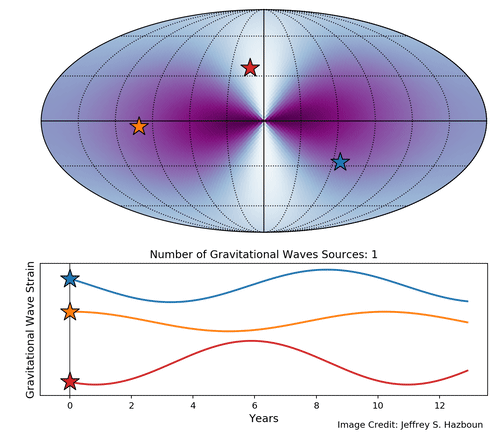
This animation shows the gravitational wave strain caused by supermassive binary blackholes. Each location on the sky map shows the gravitational wave strength that a pulsar would see from the given source. The animation cycles through a number of individual sources and then adds the signals together. A time series of the strain is shown for three representative pulsar locations (the three stars) in the lower panel. Note how the single sources look like simple sinusoids, but as we add sources the signal gets more complicated. A simple representation of the stochastic background of gravitational waves from supermassive binary black holes is built by adding 200 sources together. I've cycled through the GWB twice, mostly because I like looking at it :-)
Various versions of this animation are available below.
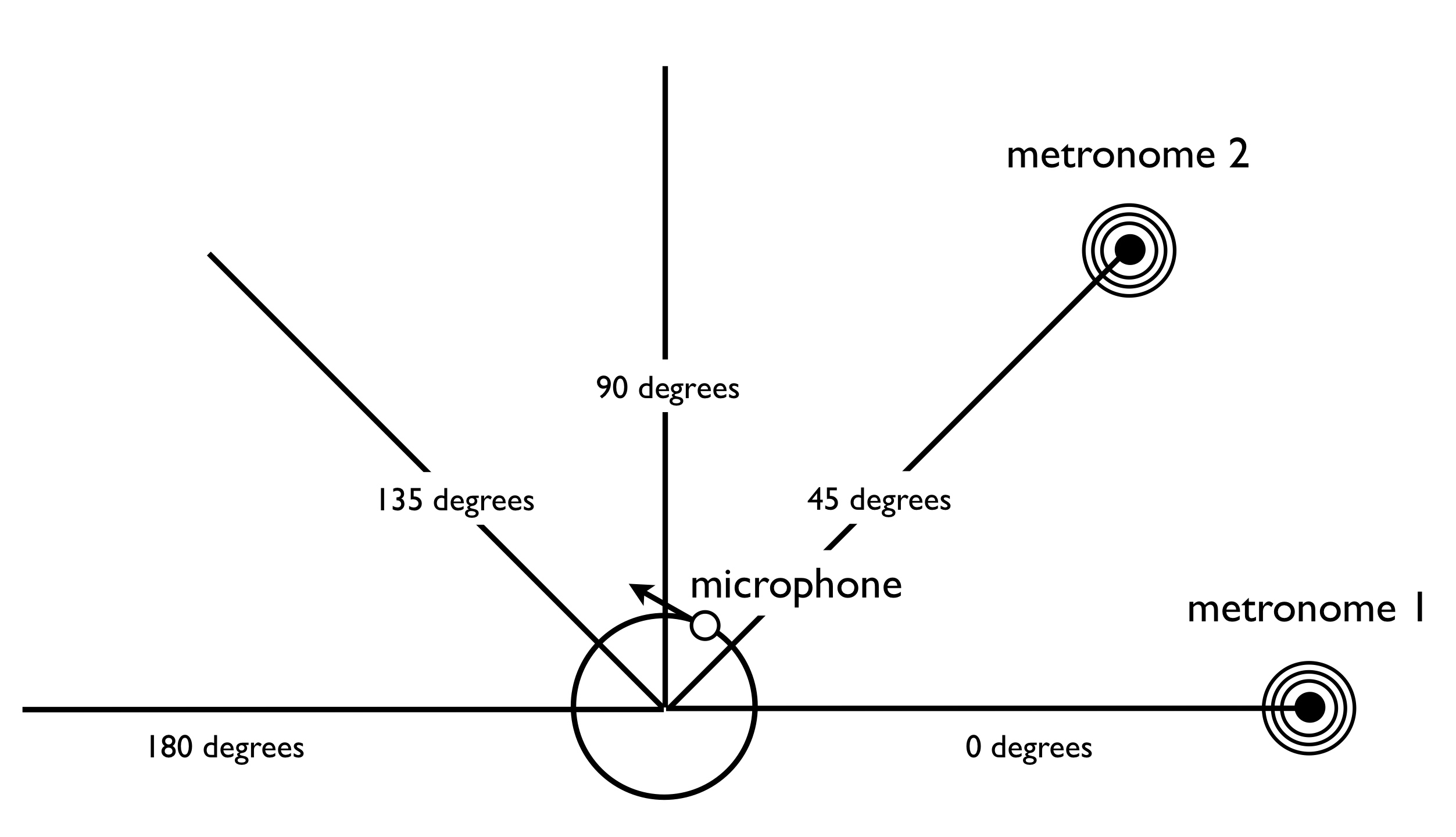
tabletop PTA
A classroom demonstration built around a Python package. It uses metronomes and micorphones to show how Doppler shifts in pulsars can reveal the relative motion of the observe.
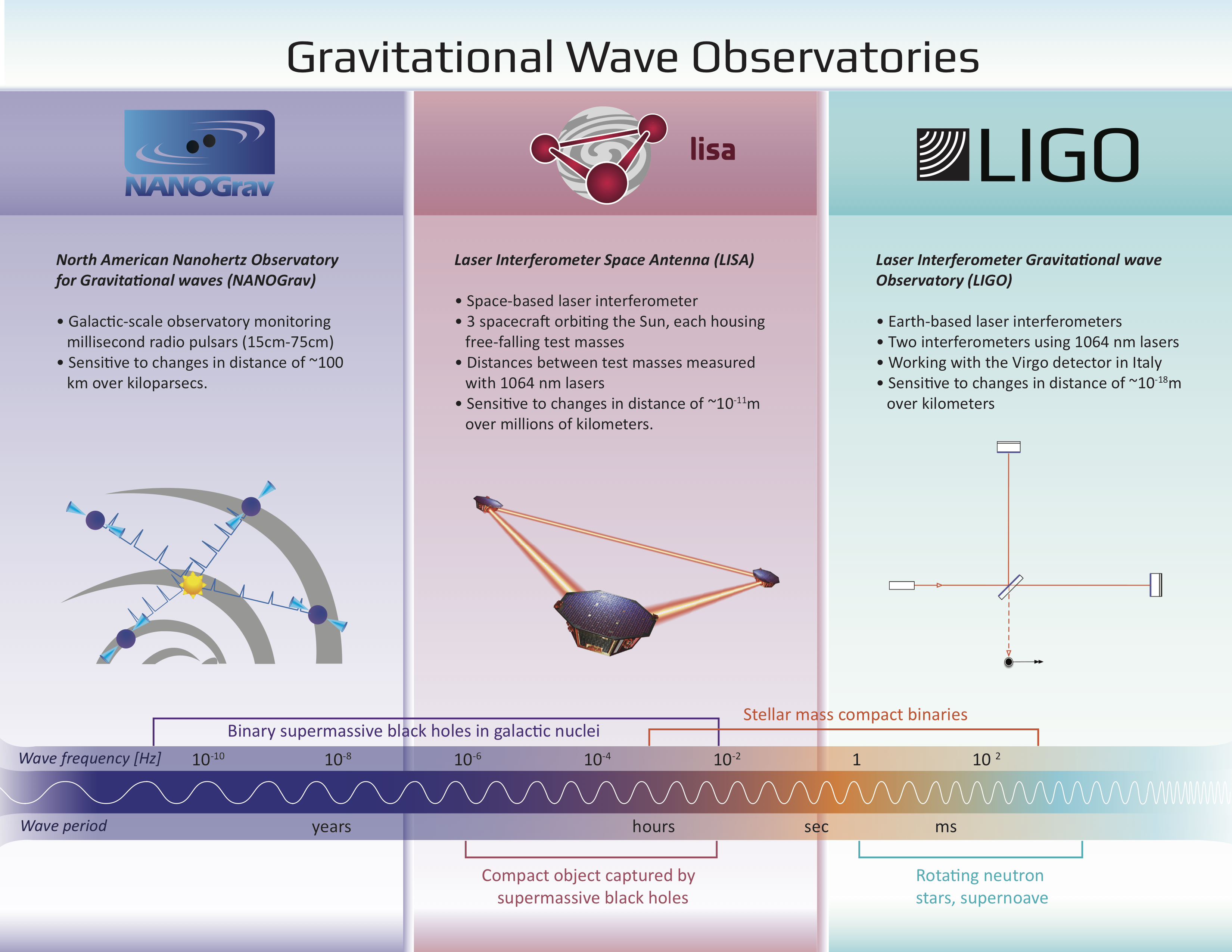
Outreach Materials
In preparation for the professional outreach activities we take part in, I helped develop a "gravitational-waves across the bands" slide.
Sonified Pulsars
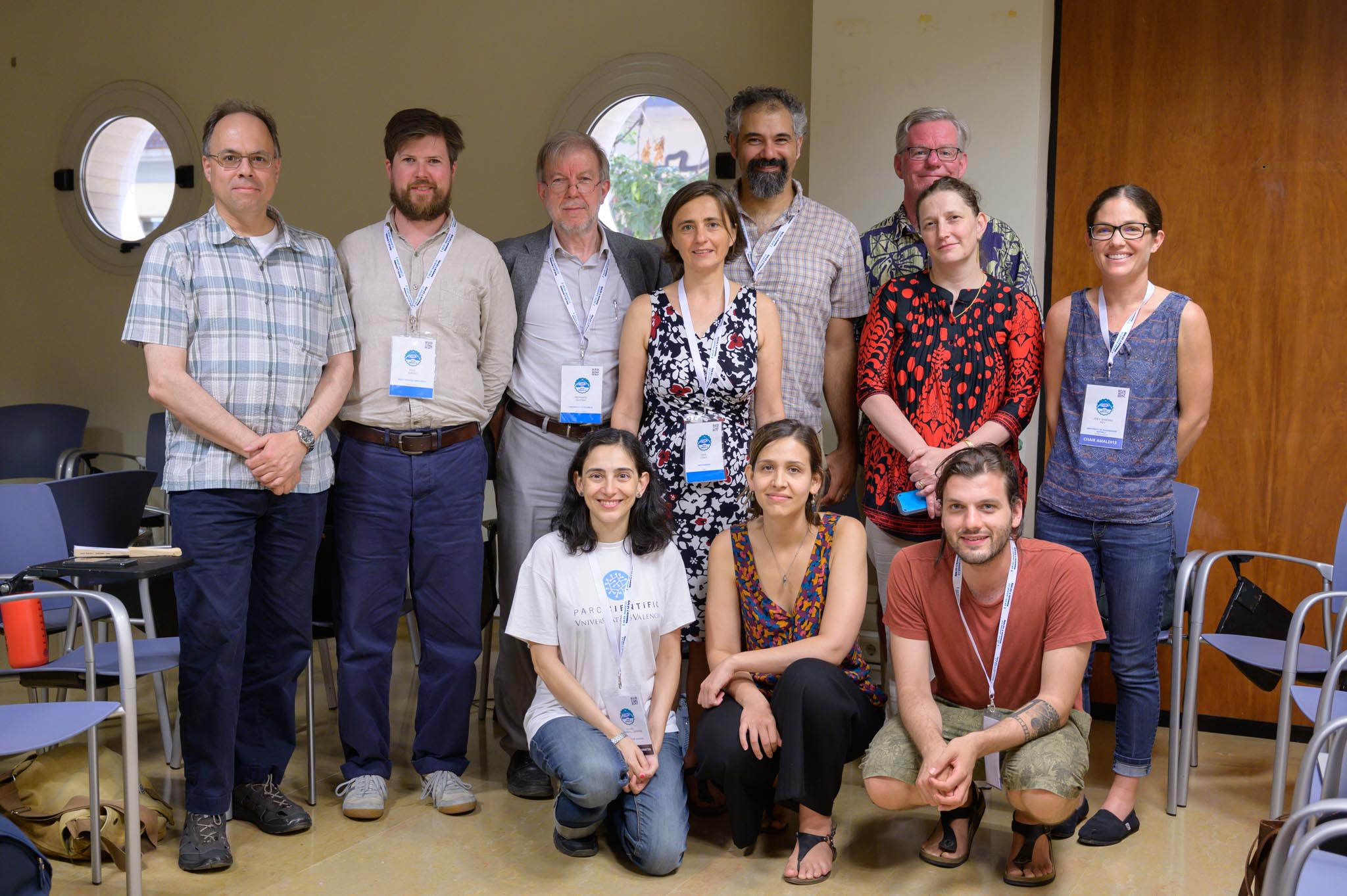
International Gravitational Outreach Group
I took part in the first International Gravitational Outreach Group, which was affiliated with the International Society for General Relativity and Gravity meeting in the Summer of 2019.
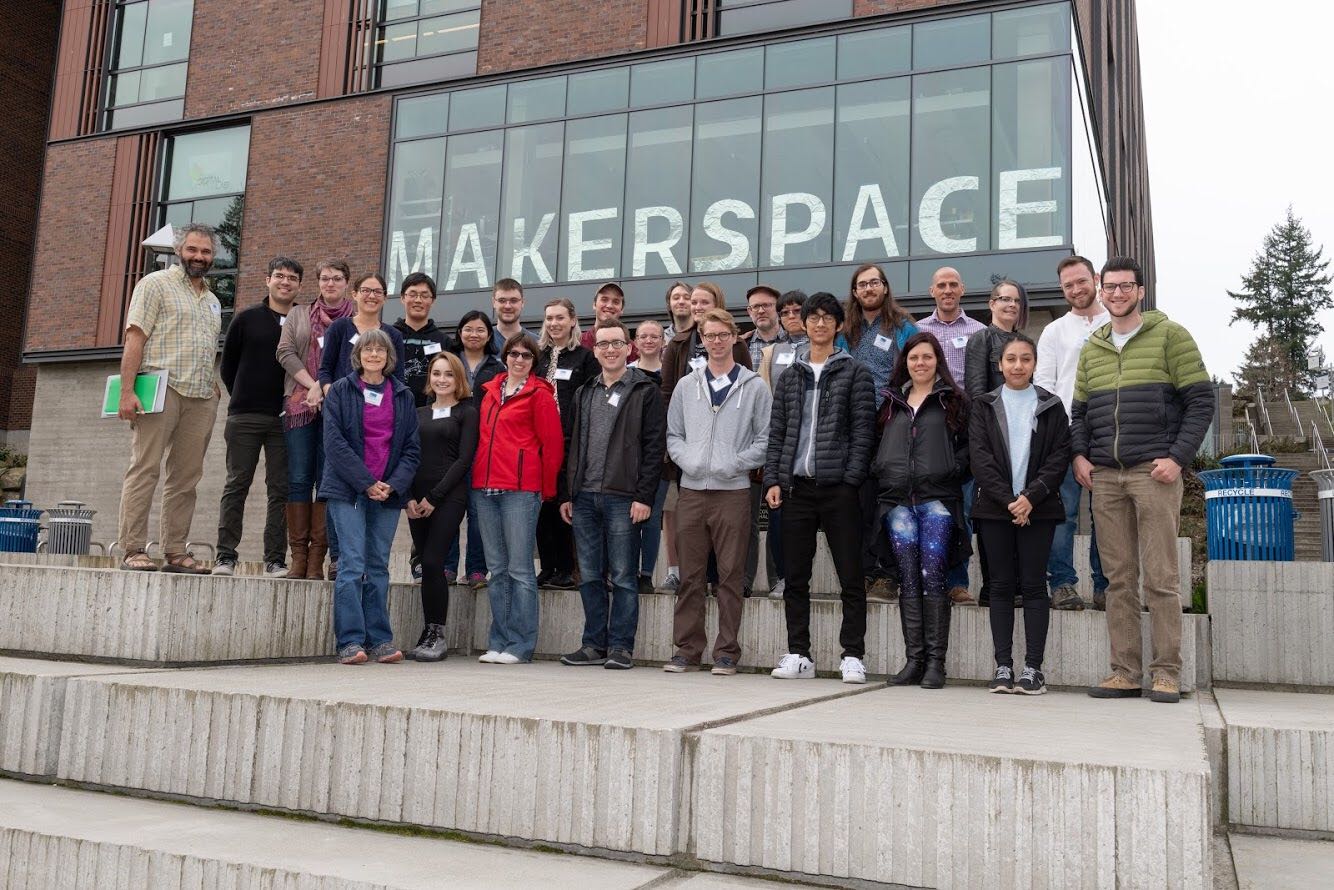
Student Workshops
As part of NANOGrav collaboration meetings we often organize student workshops to get our students and new members up to speed with the various tasks towards detecting nanohertz gravitational waves.